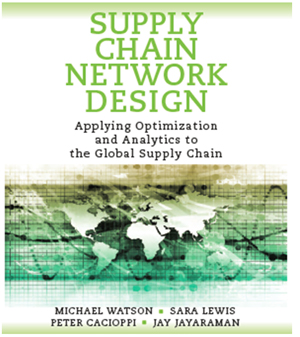Dr. Watson Says: |
 |
| ...you are unlikely to find a good market rate anyway, so don’t spend too much time trying to collect and refine transportation rates... |
|
What Do You Say?
|
|
|
|

Dan Gilmore recently ran a column that summarized the 3 Myths of Transportation, a talk by Dr. Chris Caplice, executive director of MIT'S Center for Transportation and Logistics.
We’ll focus on the first myth here: The Myth of the Market Rate. Caplice’s point was that there really is no such thing as a market rate on a lane. First, he claims that no one really has enough data to make a claim on a true lane rate. And, the data that exists shows a wide range of rates paid by different shippers and across the year.
Gilmore summed this up well with his bottom line:
“don't spend too much time, energy or money trying to identify a market rate for a lane when that just doesn't really exist. Benchmarks may provide some intelligence at times, but really should serve as just as one input into a complex equation as to what any given shipper should be paying.”
Most companies want to know the market rate to better understand how well they’ve negotiated or if they have a chance to get a better rate.
But, knowing the market rate is also important in network design studies. In our book, Supply Chain Network Design, we devote a full chapter to modeling transportation costs and spend quite a bit of time talking about the right level of detail (one chapter is on the “Art of Modeling.”).
Previous Columns by
Dr. Watson |
|
|
What makes transportation rates difficult in a network design model is that you want to consider lanes that you aren’t using. For example, if we open a warehouse in Atlanta, what will be the cost to serve customers in Memphis? If you’ve never used this lane, you won’t know what rate to expect. And, when you do find a rate from Atlanta to Memphis, you want to make sure it compares with the rates on lanes that you are using. To complicate matters, you can’t just call your carrier, because they will likely give you the “retail” rate if you are not actually bidding out the lane.
You can spend a lot of time trying to determine these rates. The book talks about several strategies for figuring out these rates. One would be to go to a benchmarking service; another would be to ask for “retail” rates for all lanes from your carrier and determine your average discount on lanes you know about; and a third way would be to run a regression analysis on the data you have to determine new lanes. And, in practice, you may need to do all three.
But, the book also talks about modeling at the right level of detail. And, usually, people err on the side of trying to put so much detail into the model that it unnecessarily complicates the model without adding value. Sometimes in modeling, good is good enough.
Caplice’s myth of the market rate reinforces this point: you are unlikely to find a good market rate anyway, so don’t spend too much time trying to collect and refine transportation rates.
Final Thoughts:
This is not to suggest that it isn’t important to create accurate network design model. It does, however, suggest that you will not be able to build a model that is 100% accurate. And, certainly, the fact that future demand and oil prices are uncertain should also make you skeptical of 100% accurate models.
Instead, you should run different what-if scenarios to make sure you have a robust solution. And, you shouldn’t make a change unless you cross a threshold—for example, don’t change your network unless you find at least 10% savings.
|